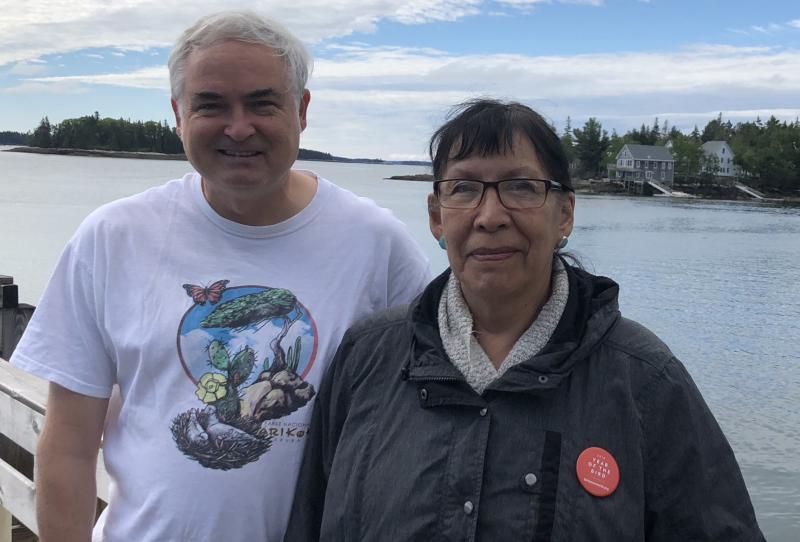A few weeks ago an elder from the Lutsel K’e Dene First Nation in the Northwest Territories of Canada arrived in Maine after two days of traveling. To get here, Florence had to fly on a small plane from her tiny community on the shore of the eastern part of Great Slave Lake—one of the world’s largest lakes—to the small city of Yellowknife. After a day of meetings in Yellowknife, Florence had to fly nearly 800 miles to Calgary and then made a shorter hop of about 200 miles north again to Edmonton where she spent another night. The next day, she flew from Edmonton to Minneapolis to New York before eventually ending up at the Portland airport, spending the night in a nearby hotel.
Why did she endure all that grueling travel?
She was making her way to National Audubon’s Hog Island camp in Bremen to attend a course called Hands-on Bird Science. Florence made the trek because she wanted to learn as much as possible about birds and birding, and take this knowledge back to her community, especially to the young people of Lutsel K’e. Florence’s background includes serving as chief and as the principal of the local school. She was the perfect ambassador.
Why, you may ask, are we bringing all of this to your attention?
Because the Lutsel K’e Dene First Nation is working to protect a landscape called Thaidene Nene (Land of the Ancestors) of more than five million acres (25 times larger than Baxter State Park) in Canada’s Boreal Forest—an area that supports literally millions of migratory birds. Florence’s trip to Maine was a small part of her community’s long and complex journey to find multiple avenues to try to achieve protections of these lands as well as a prosperous future for the young people of Lutsel K’e.
And the Lutsel K’e Dene First Nation is not alone.
Indigenous governments and communities like the Lutsel K’e Dene First Nation are leading the way in the boldest conservation initiatives now taking place across North America and the world. Although the conservation work may not be solely focused on birds, the conservation gains for birds are among the biggest in our history. Tens of millions of acres of Boreal Forest lands and waters have been or are now being proposed and advocated for conservation by Indigenous governments and communities across Canada. That means that the future of tens of millions of the birds that we love to see migrating through Maine’s forests and backyards, bays and lakes, is now made safer by the leadership of Indigenous people.
Right here in Maine, the Penobscot and Passamaquoddy Indigenous governments have been leaders in coalitions pushing for restoring sea-run fish to Maine rivers, many of which have had their fish migrations cut off by dams for hundreds of years. Fish populations in many of these rivers are starting to revive so that this year saw the largest run of alewives in North America and in 150 years, with the largest runs right here in Maine! Another part of the bird conservation success story of course is that countless birds from bald eagles and osprey to belted kingfishers and common mergansers rely on healthy fish populations to survive.
In this, The Year of the Bird, as we celebrate 100 years since the signing of the Migratory Bird Treaty Act, it is exciting to know that some of the biggest players in bird conservation today are not the ones that many bird enthusiasts know so well from the past. It’s time we celebrate the incredibly far-reaching and forward-thinking conservation work being led today by Indigenous governments and communities that will be crucial to ensuring we celebrate the birds we love in another hundred years.
Jeffrey V. Wells, Ph.D., is a Fellow of the Cornell Lab of Ornithology. Dr. Wells is one of the nation's leading bird experts and conservation biologists and author of the “Birder’s Conservation Handbook.” His grandfather, the late John Chase, was a columnist for the Boothbay Register for many years. Allison Childs Wells, formerly of the Cornell Lab of Ornithology, is a senior director at the Natural Resources Council of Maine, a nonprofit membership organization working statewide to protect the nature of Maine. Both are widely published natural history writers and are the authors of the popular book, “Maine’s Favorite Birds” (Tilbury House) and the just-released “Birds of Aruba, Bonaire, and Curaçao” from Cornell University Press.




























